United Airlines has been rapidly expanding its latest aircraft across the mainland and is preparing to deploy it on key routes this summer. But when it comes to Hawaii, it is completely missing. This comes despite United recently flying the jet to Honolulu in what appears to have been a testing flight for upcoming routes. So why has it not been scheduled for passenger service yet?
United’s latest expansion leaves Hawaii out.
United is rolling out its newest aircraft, the A321neo, across multiple hubs, including Los Angeles, San Francisco, Newark, Washington Dulles, Chicago, Denver, and Seattle. These jets will be used on routes nationwide, adding capacity and fuel efficiency to United’s network.
But when it comes to Hawaii, there is still no sign of it. Instead, United continues to operate Boeing 757s on routes like Denver to Lihue and 737 MAX, 777, and other aircraft for San Francisco and other Hawaii flights. Airlines, including Delta and Hawaii, have been using this aircraft type that airlines love on Hawaii routes, yet United has not followed.
The omission stands out, given that Hawaii flights represent a major segment of United’s leisure travel business. United operates more flights to Hawaii than most competitors other than the combined Alaska/Hawaiian airline and has historically adjusted its fleet mix aggressively. Yet, United is still holding back despite the A321neo offering better fuel efficiency and lower operating costs than some aging planes still flying to the islands.
One reader noted, “United seems to prioritize business-heavy routes first. Hawaii is a huge market, but it’s still mostly leisure. Maybe they’re waiting for premium seating demand to be higher before making the switch.”
A recent test flight raises questions.
United flew the A321neo to Honolulu from San Francisco and back in December. The flight had no passengers, strongly suggesting it was an ETOPS proving flight, a required step for aircraft to operate extended overwater routes like to and from Hawaii.
For an airline to introduce a new twin-engine jet on long overwater flights, it must complete all aspects of ETOPS certification to prove that it can safely divert to an alternate airport in the event of an engine failure. The fact that United ran this flight indicates that it is completely serious about deploying it on Hawaii’s routes.
Despite this, no such flights appear in the airline’s upcoming schedule based on our check today. Given how quickly United has moved to integrate these aircraft elsewhere, the delay raises speculation about whether technical, logistical, or strategic considerations prevent its more immediate use for Hawaii service.
Another reader pointed out, “It’s possible United wants to finish phasing out older jets first before putting these on Hawaii routes. Their 757s aren’t getting any younger, and they need a replacement.”
What is holding up Hawaii service?
United’s decision to hold back deployment of A321neo narrow-body planes on Hawaii routes could be driven by several factors. The airline still receives deliveries, and only a fraction of the fleet is in service. With demand for these jets across the network, Hawaii may not be the immediate priority.
United recently took delivery of its 25th A321neo, with the latest aircraft built at Airbus’ Mobile, Alabama facility. The airline has ambitious plans to expand the use of this airline-popular aircraft type. United has firm orders for nearly 200 A321neo and A321XLR planes. Its first A321neo entered service in December 2023, marking the first new Airbus aircraft to join United’s fleet in more than twenty years.
Route selection is likely another factor. United is placing its latest aircraft on high-frequency domestic routes first, particularly those with business demand. That leaves long-haul leisure markets like Hawaii waiting for their turn on the plane.
Passenger satisfaction—or dissatisfaction—may also be playing a role. While airlines love the A321neo for its fuel efficiency and lower costs, many passengers feel differently. Complaints range from narrower seats to small lavatories and limited space to move around. On a six-hour flight to Hawaii, those issues can be magnified.
One reader shared their experience: “I flew on one of these new United jets last month. The seats were okay, but the overhead bins fill up fast. If they put these on Hawaii flights, good luck finding space for a carry-on.”
Another traveler was more blunt: “This jet is fine for short flights, but six hours to Hawaii? No thanks. I’d rather be on a 757 or widebody any day.”
The upcoming XLR variant of this aircraft could be another reason for the delay. United has ordered this longer-range version and may be planning to use that instead for Hawaii flights.
How other airlines are approaching Hawaii routes.
While United holds back, competitors have moved forward with these narrow-body deployments to Hawaii. Delta uses this aircraft type widely on flights to all islands from the west coast. American Airlines has also widely integrated these newer aircraft into its Hawaii schedule, as has Hawaiian Airlines.
Widebody aircraft dominated mainland-to-Hawaii service for years but changed rapidly, starting with the 737 and then the A321. Airlines now see smaller, fuel-efficient jets as a way to increase frequency, lower costs, and improve flexibility on routes that were once only flown by larger planes.
The transition is not without drawbacks. Narrow-body aircraft offer less space, smaller lavatories, and reduced passenger movement on long-haul flights in both first class and economy. However, airlines continue to push forward with this shift, leaving United’s hesitation more noticeable.
A reader commented, “I’d rather be on a 757 than some of these new narrowbody jets. At least the 757 feels a little more spacious on a six-hour flight.”
When will this change?
United has not made an official announcement, but given the successful test flight to Honolulu, Hawaii service is likely coming very soon. The airline is expected to wait for additional aircraft deliveries or a shift in fleet strategy before making its next move.
For now, passengers traveling to Hawaii must rely on the existing fleet mix. However, with its focus on fuel efficiency and premium cabin upgrades, United’s latest A321neo aircraft will almost surely enter the Hawaii market. It is just a matter of when.
A final thought from a reader: “Hawaii travelers are always the last to get new planes. Hopefully, when United finally brings these jets to the islands, they’ll configure them with enough comfort for the long haul.”
We’ll await your thoughts concerning the comfort of the A321neo, regardless of the airline.
Get Breaking Hawaii Travel News

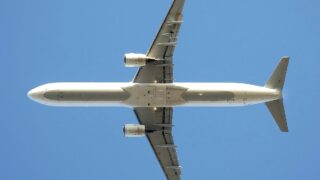
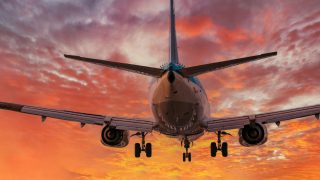
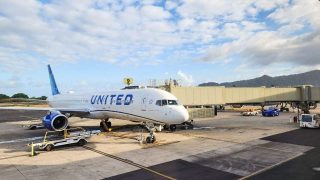
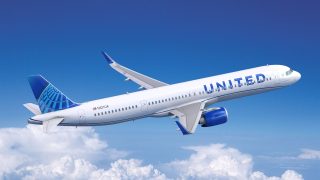
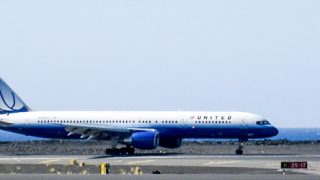
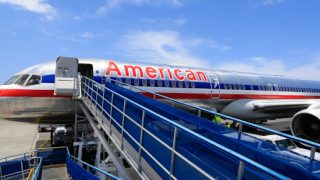
The narrow body planes are terrible on flights over 3 hours!
If Hawaiian airlines uses a321neos already then why does United airlines have to test that aircraft again? I took a flight flight Las Vegas to Kahuului Maui. It was great. Very quiet plane. Yes the space is tight ( I am a Polynesian guy fitting in a narrow seat with not much leg room), but it was smoothe flying. When we left Oahu we had the big brother, a 330-200. That was beautiful. A very memorable time for me. I like my wide body planes.
I fly united to go to Las Vegas over Hawaiian so I can fly on the 777-300er with Polaris first class seats with stop over in SFO which is normally way less thank Hawaiian with better service. Hawaiian always damages my aluminum luggage. If they change that plane to a a321 neo then I will go back to Hawaiian a330. Hope they keep the 777-300er. Much better premium seat.
Agree completely with others who have already commented about the 321neo being fuel efficient but very uncomfortable for the passenger. Just flew United’s 777-200 from HNL to LAX. Excellent aircraft, but the first class section is so outdated United should be ashamed. Old style mid 2000s uncomfortable lie-flat seats, clunky entertainment system, and lousy 2-3-2 seating.
Inflight service was just average too. I knew the seating wouldn’t be the latest version but the price was right. United is missing an opportunity to increase their Hawaiian market share by not upgrading their product. Also no Premium Economy on this flight. Come on United let’s step it up. You have been flying to Hawaii since before statehood so you should know what to do!
Hi Daryl.
Thanks for sharing your 772 update. We are both flying on that shortly and opted instead for 3 seats of extra legroom economy.
Aloha.
I think you made the right decision. Especially when considering the price. I do hope that United will upgrade its first class cabin seating on the old 777s but I’m not holding my breath. We flew SFO to LIH two weeks before on the 737 max first class, and I would say that all things considered it was better, especially since it went directly to LIH. Your 3 seat plan is something I need to try.
Aloha and keep up the good work!
Hi Daryl.
Please give it a try and let us know this thoughts. Thanks.
Aloha.
Just as a follow-up.
We wanted to check out several airlines on our latest trip to Hawaii. On the mainland we flew AS from AUS to SFO and AA from LAX to AUS in order to connect to the two UA flights, all first class. Bottom line, on the narrow bodies AS definitely had the best leg room and good service. AA had less leg room but superior food and service on this itinerary.
The simple reason that United has not put the Airbus on the Denver to Hawaii routes is that it can’t do it. The Airbus does not have enough thrust for long flights out of high altitude airports. It might be able to do it with 1/2 the passengers and no cargo. Even the awesome 757 (a little biased) takes weight penalty hits in the summer on the hottest days.
We used to fly United to Hawaii for a good many years, then they started routing us out of Denver making the overall trip very long. I’ll say one thing for the old 757, it’s one very fast aircraft if pushed. We were late getting out of Kona. As we were leaving Kona, the pilot came on con and said not to worry he would get us there in time. (SFO) That flight was under three hours. I’m sure we burnt off a lot of fuel and had a tail wind. None of the new aircraft are capable of that kind of speed but, get much better fuel economy.
The commentor on the 757 apparently doesn’t understand that the 757 is the same fuselage diameter as the 737 and the A321 is about 8″ wider (greater diameter) than the 757. The 757 fuselage is a longer version of the 737 fuselage. We flew an Icelandair 757 from Portland to Reykjavic Iceland (about a 7 1/2 hour flight) on our way to Milan last spring and it was fine for that trip. I’m 6’1″ and my wife is 6′ tall and we flew in the main cabin. We did it on Alaska Airlines miles.
I did some calculations years ago and concluded that the regular coach seats on the A320 family are 2″ wider than the on the 707/727/737/757 family, but the A320 is less tubular inside so it feels bigger.
Did Beat of Hawaii actually contact United Airlines — which employs multiple corporate spokespeople for news media queries — to ask about the A321neo’s ETOPS certification plans or whether the type will be scheduled for Hawaii service? Just a thought.
It’s really pretty simple. The A321’s aren’t based in LAX or SFO.